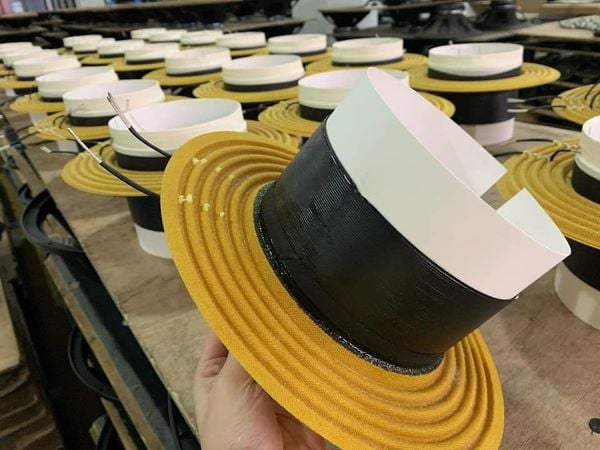The damper, also known as the spider, is an important part of the speaker. It has a braking effect and a center holding feature. The outer edge of the spider and the basket are glued together, the neck of the damper is glued to the neck of the voice coil and the paper cone, so that when the voice coil moves in the magnetic gap, there is no possibility of touching the iron part or the magnet. It can also make the voice coil and the paper cone correctly to maintain the center, so it is also called the center retainer. The weaving method, cloth density, yarn thickness, dipping concentration, forming and hot pressing temperature, also the time of the cloth all have a great influence on the strength, compliance and fatigue resistance of elastic waves. The greater the number of corrugations, the deeper the corrugations, and the thinner the material, the greater the compliance of the elastic wave. The performance of the damper is similar to the flange of the paper cone, and it affects the bass resonance amplitude, has a moderate elastic auxiliary effect on the connection of the paper cone, and can control the vibration direction of the paper cone. The elasticity (softness) of the damper and the flange of the paper cone can appropriately adjust the bass resonance amplitude, which is usually obtained in experiments.

Factors Affecting damper’s Performance
1. The shape and material flexibility of the centering piece.
2. The maximum displacement, which is related to the maximum amplitude of the speaker, depends on the distance between the outer-inner diameter and the shape of the damper.
3. Displacement linearity, which limited the range of amplitude, once beyond this range, the amplitude comes slow growth, which depends on the material and shape of the spider.
4. Displacement renaturation, when the damper is displaced by an external force, it may not be restored then, similar to the hysteresis of the magnet, which depends on the material of the damper.
Classification of materials
1. Cotton
Advantages: 1. Soft, 2. Strong adhesion, 3. affordable 4. Easy to obtain
Disadvantages: 1. Not resistant to impact, 2. Not resistant to fatigue, 3. Poor elastic recovery rate,
2. For (aramid) series, usually use “N” when marking. (conex or nomax)
Advantages: 1. Impact resistance, 2. Fatigue resistance, 3. High power resistance, 4. Highly flame retardant, waterproof
Disadvantages: 1. Too rigid, 2. Not easy to follow, 3. High price
3. DuPont (contton poly/pc)
Advantages: 1. Impact resistance, 2. High power resistance, 3 Strong rebound rate
Disadvantages: not easy to manufacture
Now there are many specially researched materials to manufacture more advanced speaker products, and our engineers have been working hard.
